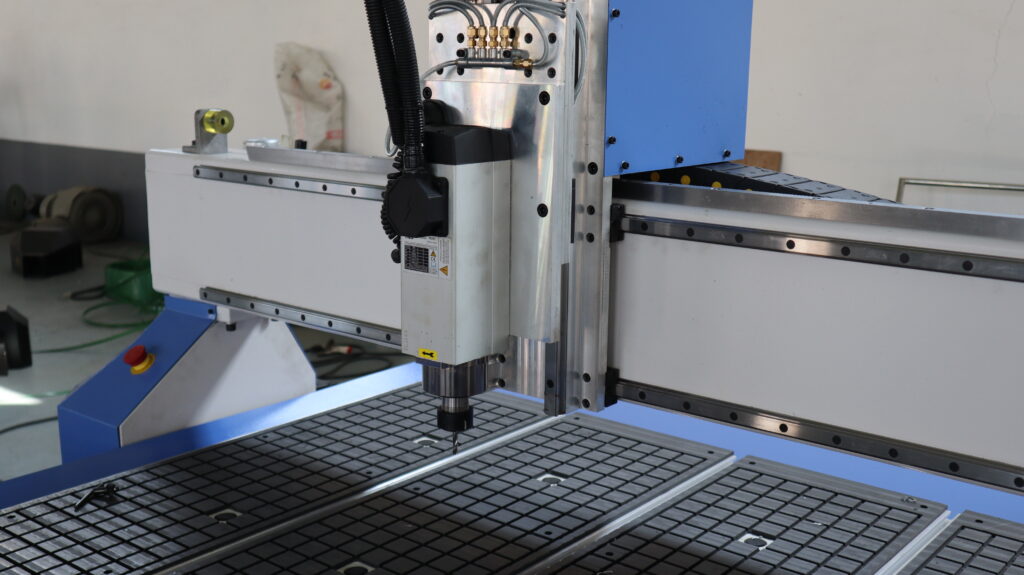Can a CNC Machine Cut Acrylic?
In the world of manufacturing and DIY projects, acrylic has become an increasingly popular material due to its versatility, durability, and aesthetic appeal. As more creators and businesses seek to work with this versatile plastic, a common question arises: can a CNC machine cut acrylic? The short answer is yes, but there’s much more to explore in terms of techniques, best practices, and considerations when it comes to CNC machining acrylic.
Understanding Acrylic and CNC Machining
Acrylic, also known as polymethyl methacrylate (PMMA) or by the brand name Plexiglas, is a transparent thermoplastic often used as a shatter-resistant alternative to glass. Its properties make it an excellent material for a wide range of applications, from signage and displays to furniture and architectural elements.
CNC (Computer Numerical Control) machining, on the other hand, is a manufacturing process that employs computer-controlled machinery to cut, drill, and shape materials with high precision. CNC machines, including routers and mills, can work with a variety of materials, including metals, woods, and plastics like acrylic.
The Advantages of CNC Machining Acrylic
CNC machining offers several advantages when working with acrylic:
- Precision: CNC machines can achieve extremely tight tolerances, essential for creating intricate designs or functional parts.
- Repeatability: Once programmed, a CNC machine can reproduce the same design multiple times with consistent quality.
- Complex Geometries: CNC routers can create complex 3D shapes that would be difficult or impossible to achieve with manual methods.
- Efficiency: CNC machining can be faster and more efficient than manual cutting methods, especially for large or complex projects.
- Smooth Finishes: With the right tools and settings, CNC machines can produce smooth, polished edges on acrylic.
Choosing the Right CNC Machine for Acrylic
When it comes to cutting acrylic, not all CNC machines are created equal. The ideal machine will depend on factors such as the thickness of the acrylic, the complexity of the cuts, and the volume of production. For most acrylic cutting tasks, a CNC router equipped with a powerful spindle is an excellent choice.
For instance, the 2.2KW ER20 Air-Cooled Spindle offers the power and precision needed for cutting acrylic efficiently. This type of spindle provides the necessary speed and torque to achieve clean cuts in acrylic sheets of various thicknesses.
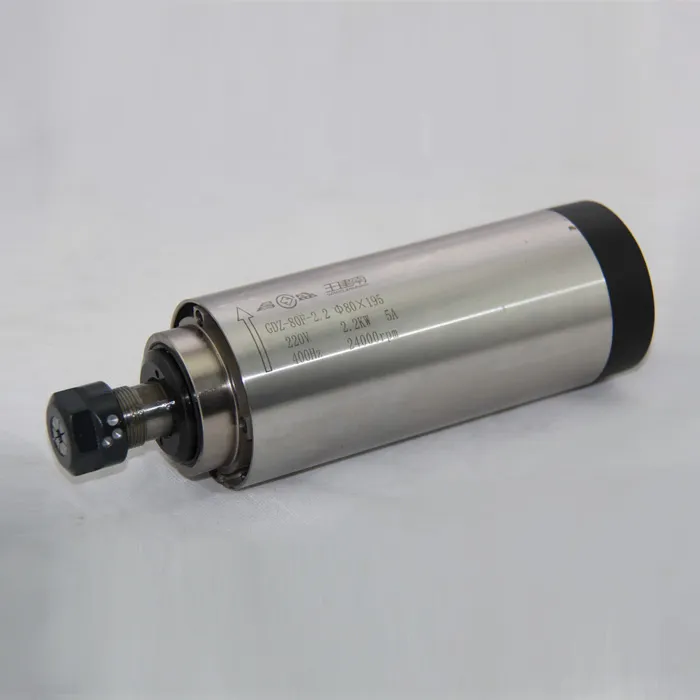
Selecting the Right Cutting Tools
The choice of cutting tool is crucial when machining acrylic. Here are some popular options:
- Single Flute Upcut Spiral Bits: These are ideal for most acrylic cutting tasks, providing a clean cut and efficient chip evacuation.
- Double Flute Straight Bits: Useful for straight cuts and engraving on acrylic surfaces.
- Diamond-Coated Bits: These can provide an extremely smooth finish but are more expensive.
- O-Flute Bits: Designed specifically for plastics, these bits help prevent melting and produce a clean edge.
When selecting a tool, consider factors such as the thickness of the acrylic, the desired finish, and the complexity of the cut.
Setting Up Your CNC Machine for Acrylic Cutting
Proper setup is crucial for successful acrylic cutting. Here are some key considerations:
- Secure Workholding: Ensure the acrylic sheet is firmly held in place to prevent movement during cutting. Vacuum tables or double-sided tape can be effective.
- Proper Cooling: Use compressed air or a mist coolant system to prevent the acrylic from melting or chipping during cutting.
- Sacrificial Backing Board: Use a backing board to prevent tear-out and achieve clean through-cuts.
- Dust Collection: Implement an effective dust collection system to manage acrylic chips and dust, which can be a health hazard if inhaled.
Optimizing Cutting Parameters
The success of CNC machining acrylic largely depends on using the right cutting parameters. Here are some key factors to consider:
- Spindle Speed: Higher spindle speeds are generally better for acrylic. A spindle like the 4.5KW ER32 Air-Cooled Spindle can provide the high RPMs needed for clean cuts.
- Feed Rate: The optimal feed rate will depend on the thickness of the acrylic and the type of cut. As a general rule, start with slower feed rates and gradually increase until you achieve the desired result.
- Depth of Cut: For best results, make multiple shallow passes rather than one deep cut. This reduces the risk of chipping and melting.
- Step Over: When engraving or surfacing acrylic, use a small step over (10-15% of the tool diameter) for a smooth finish.
Here’s a basic starting point for cutting parameters:
| Acrylic Thickness | Spindle Speed (RPM) | Feed Rate (inches/min) | Depth of Cut (inches) |
|---|---|---|---|
| 1/8″ (3mm) | 18000-24000 | 60-100 | 0.125 |
| 1/4″ (6mm) | 16000-20000 | 40-80 | 0.125 |
| 1/2″ (12mm) | 14000-18000 | 30-60 | 0.125 |
Remember, these are starting points and may need adjustment based on your specific machine, tools, and project requirements.
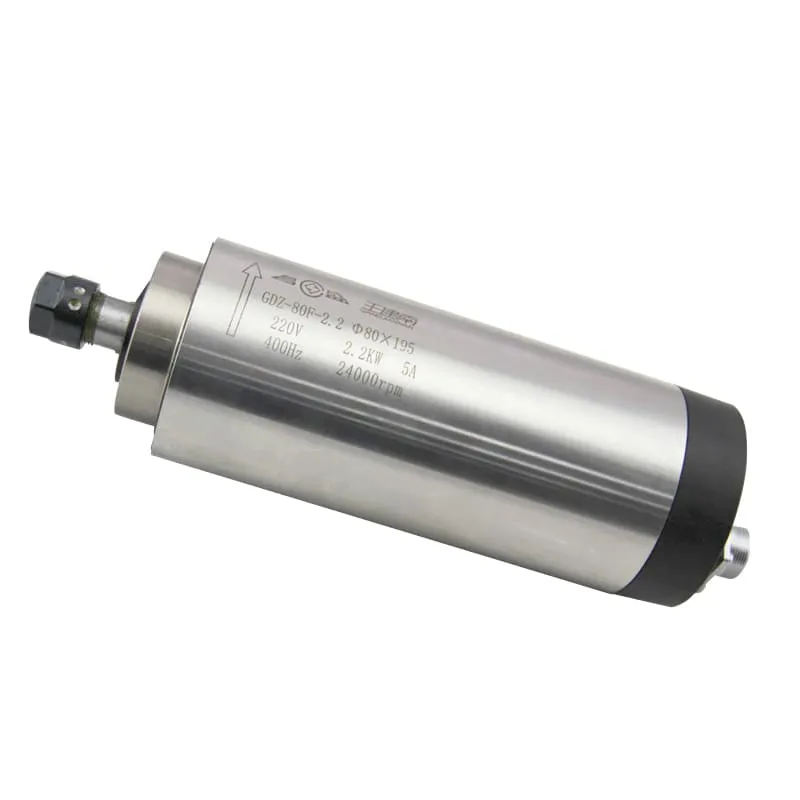
Techniques for Clean Cuts in Acrylic
Achieving clean, smooth cuts in acrylic requires attention to detail and the right techniques. Here are some tips:
- Climb Cutting: For the final pass, use climb cutting (where the cutter rotation is in the same direction as the feed) to achieve a smoother edge.
- Ramping: When plunging into the material, use a ramping approach rather than a direct plunge to reduce stress on the tool and material.
- Corner Techniques: For internal corners, use a slightly larger tool diameter than the desired corner radius to prevent stress concentrations.
- Chip Clearing: Ensure effective chip evacuation to prevent re-cutting of chips, which can lead to poor surface finish.
- Finishing Passes: Use a light finishing pass with adjusted cutting parameters to achieve the best surface finish.
Common Challenges and Solutions
While CNC machining acrylic can produce excellent results, it’s not without its challenges. Here are some common issues and how to address them:
- Melting: If the acrylic begins to melt during cutting, reduce the spindle speed or increase the feed rate. Ensure proper cooling is in place.
- Chipping: To prevent chipping, especially on the exit side of through cuts, use a sacrificial backing board and ensure your cutting tools are sharp.
- Stress Whitening: This can occur when there’s too much heat or stress during cutting. Adjust your cutting parameters and consider using lubricant or coolant.
- Poor Surface Finish: If you’re experiencing a poor surface finish, try increasing the spindle speed, reducing the feed rate, or using a different type of cutting tool.
- Static Build-up: Acrylic can generate static electricity during cutting. Use an anti-static spray or ionizing bar to mitigate this issue.
Advanced Techniques for CNC Machining Acrylic
As you become more proficient in working with acrylic, you may want to explore more advanced techniques:
- 3D Carving: CNC machines can create intricate 3D designs in acrylic, often used for artistic or display purposes.
- Multi-axis Machining: For complex shapes, consider using a CNC machine with 4 or 5 axes of movement.
- Flame Polishing: After cutting, the edges of acrylic can be flame polished for a glass-like finish.
- Thermoforming: CNC-cut acrylic pieces can be heated and formed into curved shapes.
- Inlays and Laminations: Combine different colors of acrylic or other materials for unique visual effects.
For these advanced techniques, a powerful and precise spindle like the 6KW ER32 Air-Cooled Spindle can provide the performance needed to achieve exceptional results.
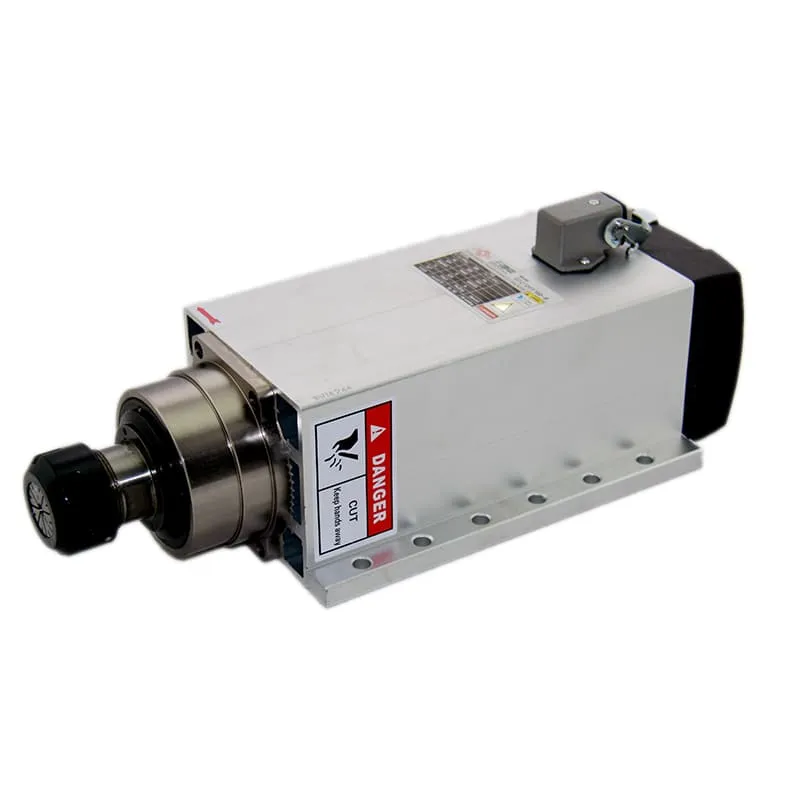
Safety Considerations
Safety should always be a top priority when CNC machining acrylic. Here are some important safety considerations:
- Ventilation: Ensure proper ventilation to remove acrylic dust and fumes, which can be harmful if inhaled.
- Personal Protective Equipment (PPE): Wear safety glasses, hearing protection, and a dust mask when operating the CNC machine.
- Fire Safety: Acrylic dust can be flammable. Keep the work area clean and have appropriate fire suppression equipment on hand.
- Machine Guarding: Ensure all safety guards are in place on your CNC machine before operation.
- Material Handling: Be cautious when handling acrylic sheets, as the edges can be sharp.
Applications of CNC Machined Acrylic
The versatility of acrylic, combined with the precision of CNC machining, opens up a wide range of applications:
- Signage and Displays: Custom signs, point-of-purchase displays, and exhibition stands.
- Architectural Elements: Light fixtures, decorative panels, and custom furniture components.
- Prototyping: Rapid prototyping of product designs and concepts.
- Scientific Equipment: Custom lab equipment, microscope stages, and optical components.
- Artistic Creations: Sculptures, awards, and decorative objects.
- Industrial Parts: Machine guards, control panels, and specialized components.
Comparing CNC Machining to Other Acrylic Fabrication Methods
While CNC machining is an excellent method for working with acrylic, it’s not the only option. Here’s how it compares to other common fabrication methods:
| Method | Advantages | Disadvantages |
|---|---|---|
| CNC Machining | High precision, complex shapes possible, good for small to medium runs | Higher initial cost, potential for tool marks |
| Laser Cutting | Fast, clean cuts, no tool contact | Limited to 2D shapes, potential for melted edges |
| Waterjet Cutting | No heat affected zone, can cut thick materials | Slower than laser cutting, rougher edge finish |
| Thermoforming | Can create 3D shapes | Limited detail, requires molds |
| Hand Fabrication | Low cost for one-off projects | Time-consuming, less precise |
CNC machining often provides the best balance of precision, versatility, and scalability for many acrylic projects.
Future Trends in CNC Machining Acrylic
The field of CNC machining is constantly evolving, and this impacts how we work with materials like acrylic. Some emerging trends include:
- Hybrid Manufacturing: Combining CNC machining with 3D printing for complex acrylic parts.
- Artificial Intelligence: AI-powered optimization of cutting parameters and tool paths.
- Sustainability: Development of more eco-friendly acrylic materials and machining processes.
- Automation: Increased use of robotic systems for material handling and post-processing.
- Virtual Reality: Use of VR for design visualization and machine simulation.
Staying abreast of these trends can help you remain competitive and efficient in working with acrylic.
FAQs
What’s the maximum thickness of acrylic that a CNC machine can cut?
The maximum thickness depends on the specific CNC machine and cutting tool. Many standard CNC routers can handle acrylic up to 1″ (25mm) thick, while more powerful machines can cut even thicker materials.
Can a CNC machine cut colored or opaque acrylic?
Yes, CNC machines can cut both clear and colored acrylic, including opaque varieties. The cutting process is generally the same, but you may need to adjust parameters slightly for different types of acrylic.
How do I prevent the acrylic from melting during CNC cutting?
To prevent melting, ensure proper cooling (using compressed air or mist coolant), use appropriate cutting speeds and feed rates, and choose the right cutting tool. Making multiple shallow passes instead of one deep cut can also help.
What’s the best way to achieve a polished edge on CNC-cut acrylic?
For a polished edge, start with a clean cut using appropriate cutting parameters. You can then use progressively finer grits of sandpaper, followed by a buffing wheel with polishing compound. Flame polishing is another option for achieving a glass-like finish.
Is it necessary to use a specific type of CNC machine for cutting acrylic?
While many types of CNC machines can cut acrylic, a CNC router is often the best choice for most acrylic projects. The key is having a machine with sufficient power, speed control, and the right cutting tools.
Conclusion
Can a CNC machine cut acrylic? Absolutely, and with impressive results when done correctly. CNC machining offers a powerful and versatile method for working with acrylic, capable of producing everything from simple cuts to complex 3D shapes with high precision and repeatability.
The key to success lies in understanding the unique properties of acrylic, selecting the right tools and machine settings, and following best practices for cutting and safety. While there’s certainly a learning curve involved, the potential applications and benefits make it well worth the effort to master this skill.
From creating stunning signage and displays to manufacturing precise components for various industries, CNC machining of acrylic opens up a world of possibilities. As technology continues to advance, we can expect even greater capabilities and efficiencies in working with this versatile material.
Whether you’re a hobbyist looking to explore new creative avenues or a business seeking to expand your manufacturing capabilities, CNC machining of acrylic offers an exciting and rewarding path forward. With the right approach and equipment, such as a high-quality spindle like the 3.5KW ER20 Air-Cooled Spindles, you can achieve outstanding results in your acrylic projects.
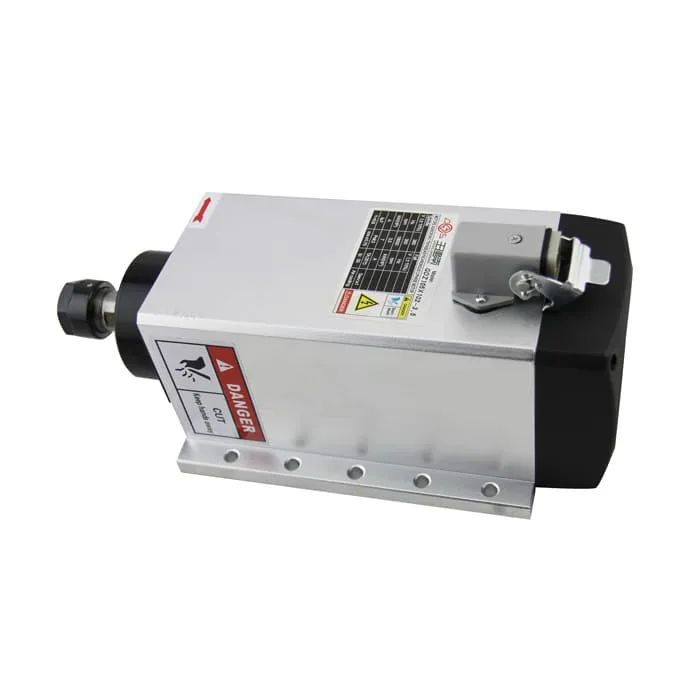
As you embark on your journey of CNC machining acrylic, remember that practice, patience, and continuous learning are key. Each project brings new challenges and opportunities to refine your skills. Embrace the process, stay curious, and don’t hesitate to experiment with new techniques and applications. The world of CNC machining acrylic is rich with possibilities, limited only by your imagination and willingness to explore.

